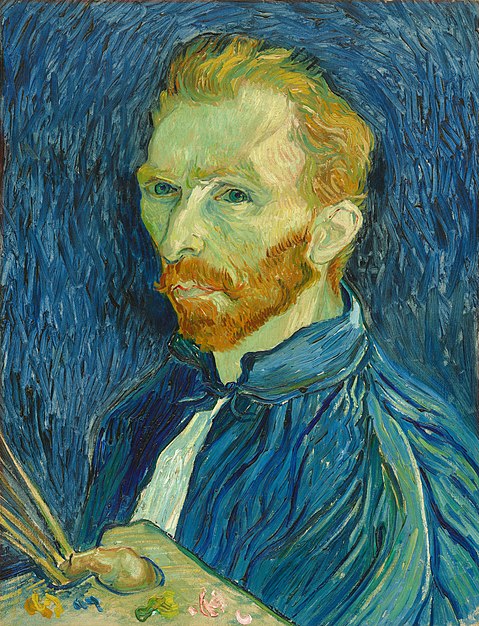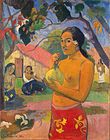
Cezanne
The Nineteenth Century ended in bright, astonishing color and eccentricity. Creative genius brought an end to the stifling dullness of Victorian repression. We witness the arrest of Oscar Wilde who wrote about the creation of London Fog by the Impressionists, claiming that nature imitates art. The transition to the 20th C. was filled with anguish and rebirth. Freud, Jung, Gross, and Spielrein spread open the secret recesses of the mind. Einstein presented an understanding of the universe that wiped out the old Newtonian order as surely as Pissarro and Cezanne brought an end to Impressionism, offering instead a new solidarity, a new vision of an even more colorful reality. Nothing would ever be the same. Mass became energy and energy mass. The Collective Unconscious lay open as archetypes emerged to replace the worn and dark images of the past.
Three artists stand out IMHO as heralding the revolution in artistic creation: Van Gogh, Cezanne, and Gauguin.
Van Gogh
"I can very well do without God both in my life and in my painting, but I cannot, suffering as I am, do without something which is greater than I am, which is my life, the power to create. "
Vincent Van Gogh
"I dream of painting and then I paint my dream."
Vincent Van Gogh
Vincent Van Gogh
"I dream of painting and then I paint my dream."
Vincent Van Gogh
"It is better to be high-spirited even though one makes more mistakes, than to be narrow-minded and all too prudent. " Vincent Van Gogh
Vincent Van Gogh gave us a vision of a world colored with passion and intensity. His swirling skies, stars, trees, fields, and brightly intense faces showed a new subjectivity, a world of violent perception, akin to the visions of Shamans, of those seers mad on Peyote or other psychedelic drugs. The mind was no longer a mere passive receiver of images of nature, it became an active shaper of reality. Van Gogh unleashed the power of the mind as creator.
Cezanne
Paul Cezanne, building on the vision of Camille Pissarro, sought to solidify the ephemeral world of the Impressionists. Volume, mass, geometry, and color that display Cezanne's sensations, his mind's encounters with nature, rather than the exact copying of nature, fill his paintings after the 1870s. He retains the awareness of light and its effects on everything, only with a fuller grasp of the underlying substance of what he paints. Cezanne frees his perceptions of the pre-conceived ideas of previous painters, of schools that imposed formal rules of composition and perspective upon reality, and on the way in which it is revealed. It is as if he removes Kant's categories of understanding and encounters nature and reality directly. Ernest Hemingway learned from Cezanne that when an artist renders the countryside or the images of others, the artist must focus on his own perceptions and sensations rather than slavishly recording, like mechanical photographic reproduction, of what he sees.
As Rilke said of poetry and all the arts after his encounter with Cezanne's paintings, "One has to be able at every moment to place one's hand on the earth like the first human being."
Gauguin
Gauguin
" Art is either plagiarism or revolution."
Paul Gauguin
Paul Gauguin
"Art requires philosophy, just as philosophy requires art. Otherwise, what would become of beauty? "
Paul Gauguin
"Civilization is what makes you sick. "
Paul Gauguin
Paul Gauguin
"Civilization is what makes you sick. "
Paul Gauguin
Paul Gauguin made his dream, his philosophy, and his rejection of polite, hypocritical society, into a new subjective, romantic vision he came to inhabit. Like D.H. Lawrence, he despised European "civilization," with its rules of behavior, its religious self-righteousness, its artificiality, its repression of creativity, sexuality, and natural connection to the Earth.
Like Lawrence, he traveled the world, filled with Wanderlust, eager for a more tribal reality in which people were in touch with nature and with each other. On ever remoter islands in the South Pacific around Tahiti, Gauguin realized what he was after, both in his life, his love, and his art.
As Gauguin described himself, he was "too savage a man to live a civilized life, too civilized to be a happy savage."
Note: Wikipedia has excellent galleries and links to all three artists and a fine article on Post-Impressionism, generally.
Note: Wikipedia has excellent galleries and links to all three artists and a fine article on Post-Impressionism, generally.
- Paul Cézanne (1839–1906)






